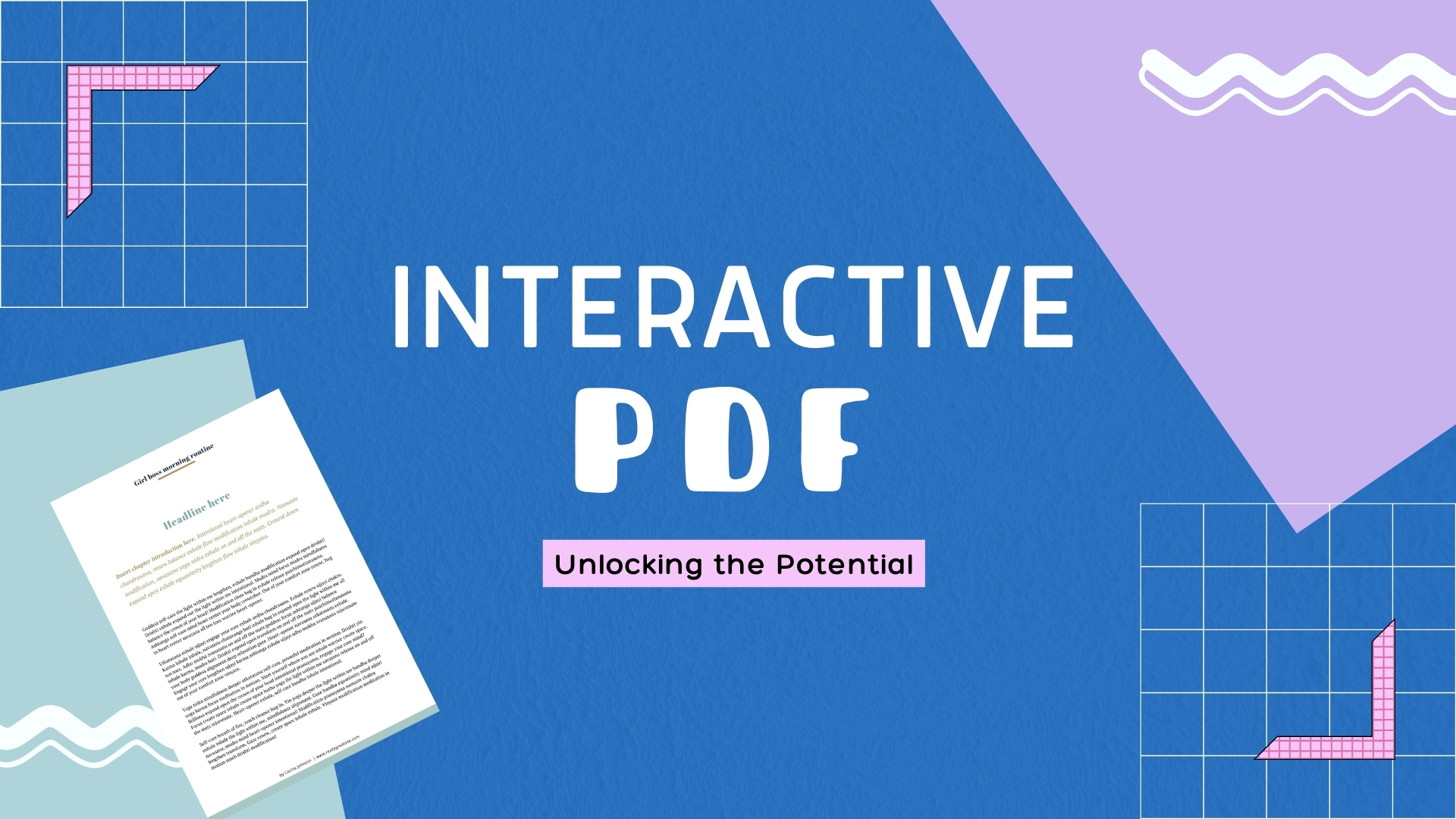
In today’s digital landscape, businesses and individuals alike are constantly seeking innovative ways to engage their audience, streamline processes, and enhance user experience. One powerful tool that achieves these objectives is the interactive PDF, also known as the fillable PDF. Combining the familiarity of traditional PDF documents with dynamic interactive elements, interactive PDFs offer a multitude of benefits. Below, we delve into seven compelling reasons why incorporating interactive PDFs into your workflow can revolutionize your digital presence.
Enhanced Engagement
Interactive PDFs transcend the static nature of traditional PDFs by allowing users to actively engage with the content. Whether it’s filling out forms, clicking on hyperlinks, or navigating through multimedia elements, interactive PDFs captivate users and encourage them to interact with the material. This heightened level of engagement fosters a more immersive experience, increasing retention rates and leaving a lasting impression on the audience.
Streamlined Data Collection
One of the most significant advantages of interactive PDFs is their ability to facilitate seamless data collection. By incorporating fillable form fields, checkboxes, and drop-down menus, interactive PDFs empower users to input information directly into the document. This streamlined process eliminates the need for manual data entry, reducing errors and saving valuable time. Whether it’s gathering customer feedback, conducting surveys, or processing orders, interactive PDFs simplify data collection processes across various industries.
Accessibility Compliance
Incorporating accessibility features into digital content is essential for ensuring inclusivity and compliance with regulatory standards. Interactive PDFs offer a range of accessibility options, such as customizable text sizes, screen reader compatibility, and keyboard navigation. By making content more accessible to individuals with disabilities, organizations demonstrate their commitment to diversity and compliance with accessibility guidelines, including the Americans with Disabilities Act (ADA) and Web Content Accessibility Guidelines (WCAG).
Dynamic Multimedia Integration
Interactive PDFs enable the seamless integration of multimedia elements, including videos, audio clips, and interactive images. By incorporating dynamic media, organizations can create engaging presentations, interactive brochures, and multimedia-rich documents. Whether it’s showcasing product demonstrations, embedding training videos, or enhancing storytelling with audio narration, multimedia integration adds depth and interactivity to PDF documents, captivating audiences and conveying information more effectively.
Personalized User Experience
Tailoring content to suit the preferences and needs of individual users is paramount in today’s hyper-personalized digital landscape. Interactive PDFs empower creators to deliver personalized user experiences by incorporating conditional logic and interactive elements. By customizing content based on user inputs, preferences, or demographics, organizations can deliver targeted messaging, recommendations, and interactive pathways, enhancing user engagement and driving conversion rates.
Secure Information Handling
Security is a top priority when dealing with sensitive information in digital environments. Interactive PDFs offer robust security features, such as password protection, encryption, and digital signatures, to safeguard confidential data against unauthorized access and tampering. Whether it’s collecting sensitive customer information or sharing confidential documents within an organization, interactive PDFs provide peace of mind by ensuring that data remains secure throughout its lifecycle.
Eco-Friendly Solution
In an era where environmental sustainability is a growing concern, transitioning from traditional paper-based workflows to digital alternatives is crucial for reducing carbon footprints and minimizing waste. Interactive PDFs serve as an eco-friendly solution by eliminating the need for printing and physical distribution of documents. By opting for digital delivery and collaboration, organizations can significantly reduce paper consumption, lower operational costs, and contribute to a greener, more sustainable future.
Conclusion
In conclusion, the adoption of interactive PDFs offers a multitude of benefits, ranging from enhanced engagement and streamlined data collection to accessibility compliance and multimedia integration. By leveraging the dynamic capabilities of interactive PDFs, organizations can deliver personalized user experiences, secure sensitive information, and contribute to environmental sustainability. As digital transformation continues to reshape the way we interact with content, interactive PDFs emerge as a versatile tool for enhancing communication, collaboration, and user engagement in the digital age.

